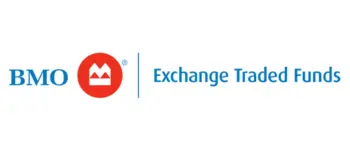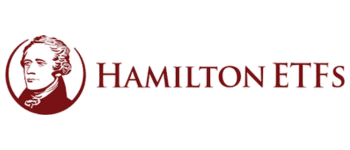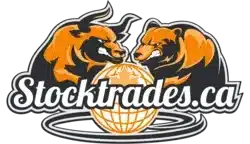Exploring Canada’s Most Popular Covered-Call ETFs for Income Seekers
Key takeaways
Enhanced Income Generation – All these ETFs utilize covered call strategies to generate additional income over dividends, making them attractive for yield-seeking investors.
Sector & Geographic Diversity – The selection spans multiple sectors and regions—from technology and U.S. equities to European and commodity-related funds—providing diversified exposure.
Balanced Trade-Offs – While covered calls help boost income and reduce volatility, they may cap potential upside during strong bull markets.
One ETF I like way better than the ones on this list.Although I certainly advocate for a total return strategy when it comes to investing, I also realize that some investors may be willing to forego total returns to generate more income from their portfolios.
This steady stream of income is predictable and can allow investors to withstand the volatility of the markets, all while having a stream of income in their accounts that can help them pay the bills or even buy more stocks.
For this rationale, Canadian-covered call ETFs are gaining popularity at what I would deem a crazy pace. More and more fund managers are coming out with new ways to generate the maximum yield from their funds, all in an effort to make them more attractive to yield-focused investors.
These Canadian ETFs often hold the same holdings as their non-covered call counterparts. The difference is that the covered call variants attempt to boost their distributions by collecting premiums by selling call options.
To put it lightly, a lot of covered call funds are poor investments. Some are bordering on outright horrendous. For this reason, I’ve built an article highlighting some Canadian covered call ETFs that have provided solid returns and are structured somewhat reasonably.
If you don’t know what a covered call options strategy is, I have an in-depth guide at the bottom of this article.
Let’s dive right into the funds.
The best covered call ETFs in Canada to buy right now
- BMO Covered Call Technology Fund Series ETF (TSE: ZWT)
- Hamilton Enhanced Multi-Sector Covered Call ETF (TSE: HDIV)
- BMO US High Dividend Covered Call Series Units ETF (TSE: ZWH)
- BMO Europe High Dividend Covered Call Fd Srs ETF (TSE: ZWP)
- BMO Canadian High Dividend Covered Call Fd Srs ETF (TSE: ZWC)
- Hamilton Enhanced U.S. Covered Call ETF (TSE: HYLD)
- Global X Gold Producer Equity Covered Call ETF Class E (TSE: GLCC)
- Global X Can Oil and Gas Equity Covered Call ETF Class E (TSE: ENCC)
Tech exposure with income boost
BMO Covered Call Technology Fund Series ETF (TSE: ZWT)

ZWT targets major North American technology companies, applying a covered call strategy to generate extra income. This ETF offers tech-sector growth potential while softening volatility through option premiums.
Multi-sector diversified income enhancer
Hamilton Enhanced Multi-Sector Covered Call ETF (TSE: HDIV)

HDIV offers exposure to multiple sectors across North American equities while employing a covered call strategy to enhance income. It is designed for investors seeking broad market diversification coupled with improved yield.
High-yield U.S. equity income enhancer
BMO US High Dividend Covered Call Series Units ETF (TSE: ZWH)

ZWH focuses on high-dividend-paying U.S. stocks while applying a covered call strategy to generate extra income. It is ideal for investors seeking U.S. market exposure with a tilt toward income rather than pure capital appreciation.
European high-dividend income strategy
BMO Europe High Dividend Covered Call Fd Srs ETF (TSE: ZWP)

ZWP provides exposure to high-dividend European equities, combining stable payouts with additional income from covered calls. This ETF is designed for investors seeking diversification beyond North America with a focus on yield.
Domestic high-yield income play
BMO Canadian High Dividend Covered Call Fd Srs ETF (TSE: ZWC)

ZWC targets high-dividend-paying Canadian companies while applying a covered call strategy to further boost income. It is tailored for investors focused on domestic yield and income stability.
U.S. equity income with call overlay
Hamilton Enhanced U.S. Covered Call ETF (TSE: HYLD)

HYLD focuses on U.S. equities with an emphasis on dividend yield, augmented by a covered call strategy to further boost income. It provides a U.S.-centric income play with an emphasis on stability and yield enhancement.
Gold producers with call income
Global X Gold Producer Equity Covered Call ETF Class E (TSE: GLCC)

GLCC invests in leading global gold producers and employs a covered call strategy to enhance income. This ETF targets investors interested in the gold sector’s defensive qualities while capturing extra premium income.
Energy sector yield with option overlay
Global X Can Oil and Gas Equity Covered Call ETF Class E (TSE: ENCC)

ENCC provides exposure to Canadian oil and gas equities while employing a covered call strategy to boost income. The ETF is designed for investors seeking yield from the energy sector, balancing volatility with enhanced cash flow.
Lets discuss options contracts further
What is a call option?
Call options are a contract that gives the buyer of the option the right but not the obligation to purchase stock from the seller of the option at a set price for a limited amount of time.
Put options are the opposite, where the buyer of the option has the right to sell a stock to the seller of the option. However, that’s a topic for another article.
The call option buyer pays the seller a premium for the right. As a generic example, you may pay a $100 premium right now to have the right to purchase 100 shares of stock ABC by March 19th, 2027, at a particular price called the strike price.
Or, as the seller of a call option, you will receive $100 now but have to be willing to sell 100 shares of ABC stock to the option buyer on or before March 19th, 2027, at the strike price.
Investors can sell call options on stocks they own, known as a covered call option, or on stocks they do not own, known as a naked call option.
What is a covered call investing strategy?
As I mentioned, you need to own the underlying stock on which you’re selling the call option for it to be classified as a covered call. So, why are we doing this?
With a covered call strategy, we hope to collect the option premium we receive by selling that cover call and hanging on to the stocks we own. Let’s review a simplified example of how a covered call strategy can benefit and hurt you, as there are two sides to this coin.
We’ll assume that we own 100 shares of stock ABC, trading at $100 and paying a $5 per year dividend.
We’re looking to squeeze out some extra income from this holding, so we decided to sell some covered calls with a $110 strike price, expiring in a few months. Let’s assume, for this example, we’ve collected $200 in premiums.
The pros of covered calls
If the stock price trades sideways for the next two months, we’ll have collected $200 in premium income and still hold our 100 shares of stock ABC.
Over the year, this can add considerable income to our total “yield” of the 100 stocks. Although the company isn’t paying us anymore, we’re collecting money from investors speculating or hedging by buying our call options.
Remember that you can take more or less risk by adjusting your strike price. For example, a $150 strike price will likely expire useless, but you’ll collect significantly less premium than one with a $105 strike.
This is primarily derived from an option’s time value, intrinsic value, and volatility. But that is a tutorial for another article.
The cons of covered calls
If company ABC issues strong earnings over the next few months and the stock rises to $130, we’ll be forced to do two things. We will have to repurchase a call option to counter the sale, or we will have the option we sold exercised, and we’ll be forced to sell the stocks at our strike price.
In this case, we’ll be forced to sell a $150 stock for $130, losing $2000.
This is the primary case against a covered call strategy. In rising markets, selling covered calls is typically a losing proposition as they cap your upside potential. However, during bear markets, they can lower your downside risk and increase your income.
With that being said, who are Canadian covered call ETFs for?
I’m a strong advocate for total return investing. That means that whether it is through capital appreciation, dividends, or interest, all that matters in terms of investment results, in the end, is your final return.
However, covered call ETFs are excellent for those willing to sacrifice overall gains for more income. Yes, your upside is capped due to the covered-call nature of the fund, but you’ll also have more dollars in your bank account to fund your retirement or pay your bills.
You will also have a little reprieve regarding market volatility as they have some downside protection.
**Of note, you must review each fund’s prospectus. They will have different strategies, and I recommend becoming familiar with them before buying one. If one would like to expand their knowledge in ETFs, these are great research points, along with niche growth ETFs, all-in-one ETFs, dividend ETFs, etc.
This list is by no means an all-in-one guide
There are way too many covered call ETFs here in Canada to ever have a definitive list of the top options. But it should at least help you begin your research into a prospect that works for you or presents some info to get your feet wet if you are just learning how to buy stocks.
You’ll also notice that through the majority of this article, there is a common theme. BMO and Hamilton have a stranglehold on the covered call ETF market here in Canada. Most of their funds have the most significant AUM and trading volume and are among the best managed.
Are you really into income ETFs? Don’t miss the best high-yielding ETFs in Canada.
